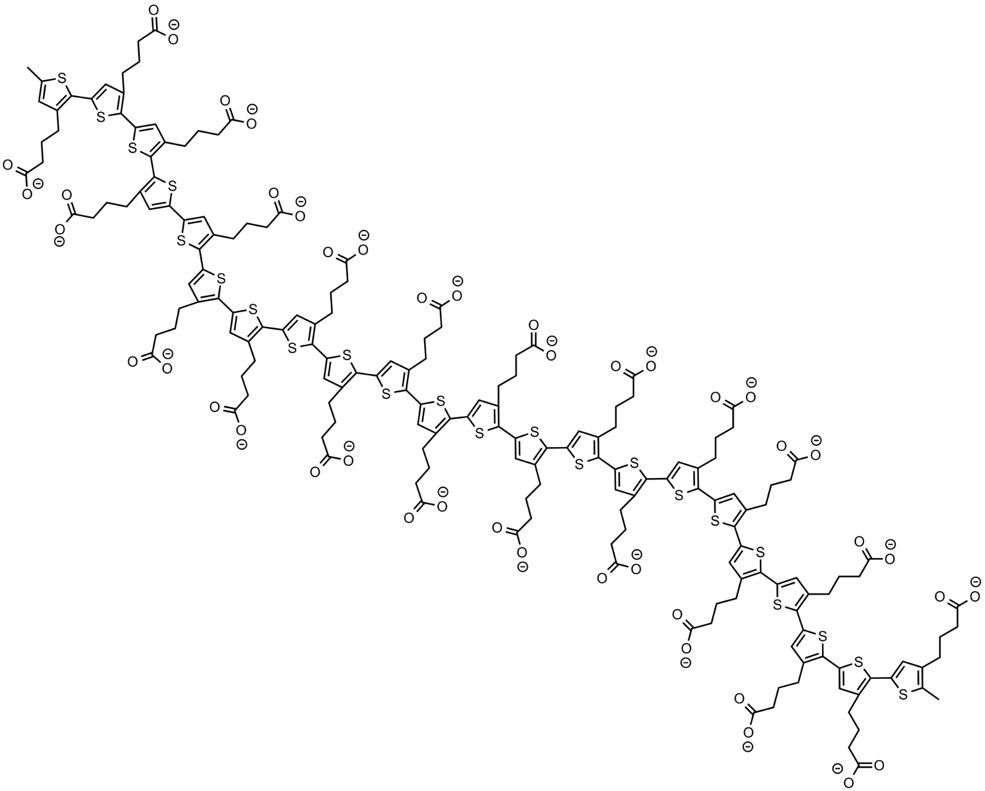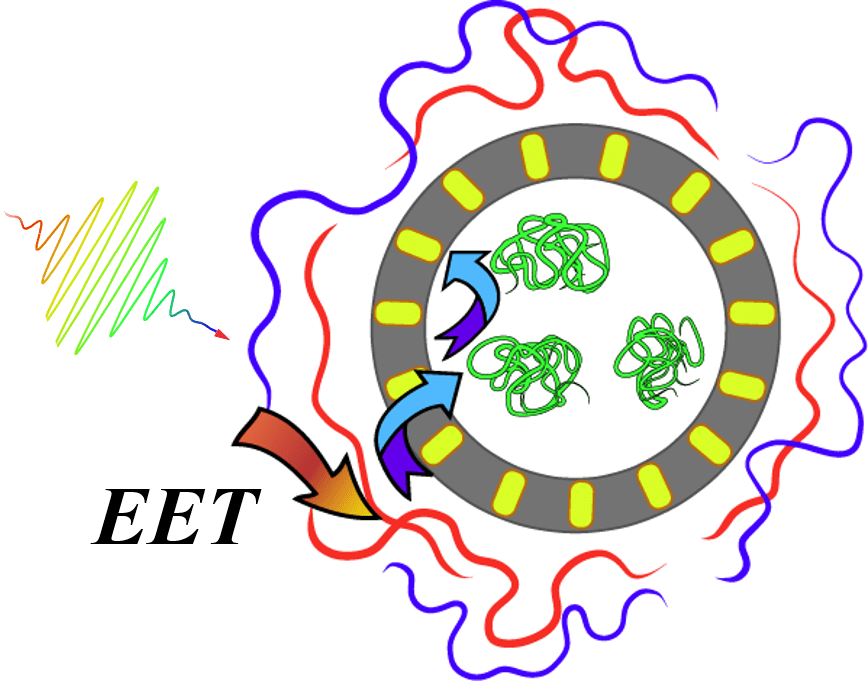The light-harvesting apparatus that powers photosynthetic bacteria and plants is not only fascinating from a photophysical and photochemical point of view. What is also remarkable is the required spatial heterogeneity and compartmentalization of the soft-matter assemblies that ultimately make up this apparatus. The compartmentalization is necessary to spatially partition the many processes that constitute the overall transformation of sunlight to biochemical energy. The overarching question that we seek to answer is, how can we mimic the basic parts that make up a light-harvesting organelle in the lab in a structurally tractable manner? That is, how can we construct a compex, artificial light-harvesting super-system capable of efficiently executing several critical photophysical transformations? We have begun answering this question by working on self-assembly of conjugated polyelectrolytes (CPEs), which are water-soluble, ionically charged semiconducting polymers.
 The specific promise of CPEs in this research direction rests on the following. First, CPEs exhibit a strong coupling between electronic and ionic degrees of freedom. This fact can be utilized to create aqueous macromolecular assemblies with highly efficient electronic energy transfer (EET) and diffusion.
The specific promise of CPEs in this research direction rests on the following. First, CPEs exhibit a strong coupling between electronic and ionic degrees of freedom. This fact can be utilized to create aqueous macromolecular assemblies with highly efficient electronic energy transfer (EET) and diffusion.

Cartoon showing an electrostatic complex between oppositely charged CPEs. Electronic energy transfer (EET) time between CPEs can be extremely short: less than 250 femtoseconds.
Second, complexation between oppositely charged polyelectrolytes in solution can lead to associative liquid/liquid phase separation, leading to the coexistence between a dilute and a highly polyelectrolyte-enriched complex-coacervate phase. Complex coacervation of biologically relevant polyelectrolytes has been implicated in the formation of early (natural) membrane-less organelles. This associative phase separation represents a possible path to compartmentalization of optoelectronic components of a larger system.
Though challenging, we believe that it should be possible to combine multiple macromolecular assemblies into an overarching system capable of executing several critical light-harvesting steps. These include panchromatic light absorption, directional EET, facile electron/hole pair generation, and importantly, long-lived charge-separated states. We imagine a possible light-harvesting super-system (below) composed of a self-assembled soft-matter scaffold that co-localized and spatially organizes the primary components.

An “artist’s conception” of a possible CPE-based light-harvesting super-system with partitioning of internal structure. The orange arrow indicates EET, while the blue arrows indicate sequential electron transfer.
We are currently working on understanding and manipulating: (1) the kinetics and thermodynamics of hierarchical CPE-based assemblies, (2) the phase behavior of CPE-based complex fluids, and (3) the influence of assembly structure on exciton and polaron dynamics.
